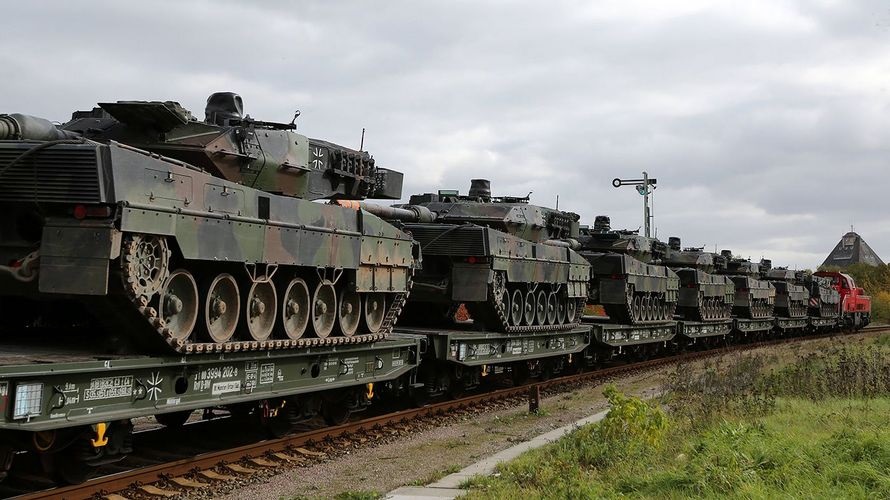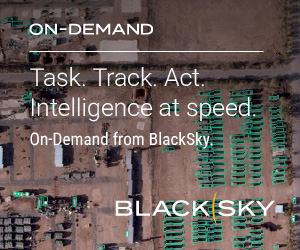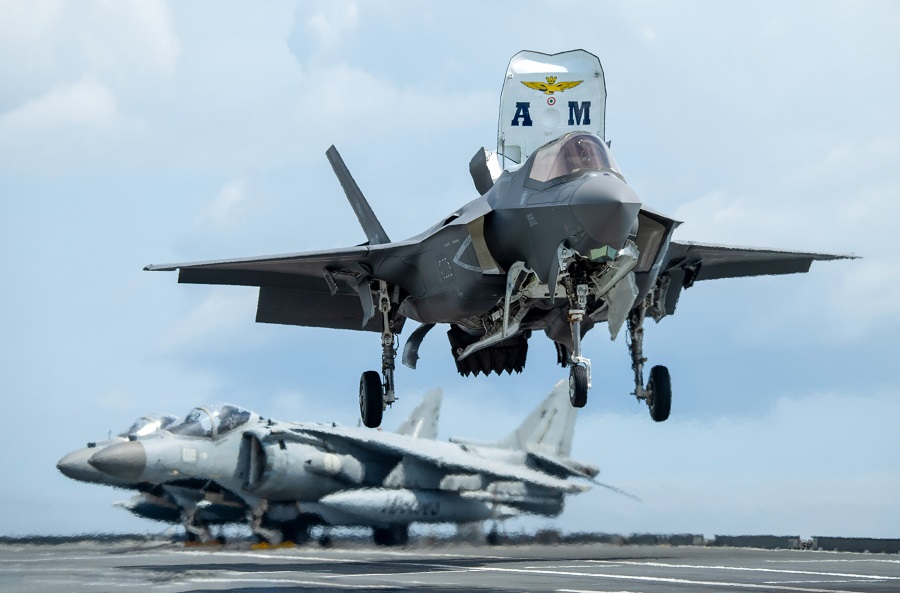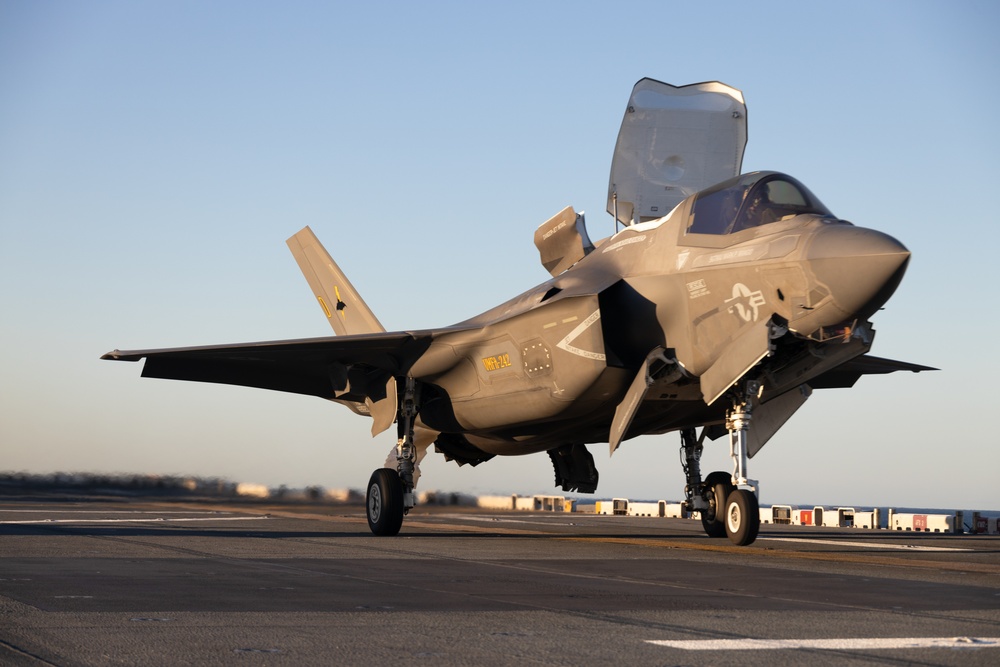INTRODUCTION
Technological innovations are present in many civil sectors, with the military being no exception, making processes faster and more efficient. New technologies, which can include unmanned systems, Additive Manufacturing (AM), Artificial Intelligence (AI) or even 5G, are changing warfare and its logistics tail, which is the amount of personnel and material needed to supply and support, at the same time. The introduction of these improvements is essential for the development of military capabilities and operations, as well as for improving defence logistics by enhancing accuracy, intelligence and resources while reducing costs and risks in multiple areas. This article aims to analyse and provide examples of how new technologies can shape the future of logistics in the military, especially for the European Armed Forces.
NEW TECHNOLOGIES: A GAME CHANGER FOR ARMIES?
Improvements in technology can change the way operations are prepared and undertaken by the military in the field, in sectors such as intelligence gathering, preparing operations and logistics. This is particularly important for logistics, as they are expensive, they have a long wait for spare parts production, and convoys transporting equipment and materials are easy targets that can jeopardise entire operations.
However, military logistics encompass more functions than one might first assume. It comprises large quantities of data to analyse to make decisions regarding supply, transportation and communications. In doing so these emerging technologies impact all of the sectors that logistics comprises, such as the production of goods, the means of transport and the volume of goods transported, by providing an easy, safe and efficient manner in which to carry out logistical tasks.
The use of new technologies can enhance the capabilities and the outcomes that the military sector possesses. There are 7 specific ways, according to the Institute for Defence and Business, in which new technologies can improve logistics operations in the military and provide benefits for the field:
- Data analysis. Modern technologies can provide users with fast and easy access and distribution of specific information.
- Models for testing logistics. The use of technology in defence logistics enhances testing capabilities. With the use of AI, defence organisations can model specific scenarios to ensure proper testing of equipment and deployment of logistics.
- Supply chain efficiency. Efficiency can be achieved easily by optimising the supply chain and distribution process. Different stages in the supply chain are becoming digitalised and supported by new technologies. This way, information can be integrated, and the process can be successfully monitored.
- Life cycle logistics. The introduction of emerging technologies in logistics can update the system and replace ageing or malfunctioning equipment, also improving military preparedness.
- Cybersecurity. Technological innovations can help with security design, testing and evaluation. The military has valuable confidential information, intelligence and defence logistics that need to be protected against potential threats.
- Reduction of costs. Military organisations need to operate on a specific budget. Increasing the efficiency of the supply chain by introducing emerging technologies can reduce financial costs.
- Application design. The introduction of application design in logistics of the defence sector has allowed technology to be adjusted to each specific sector’s needs.
Therefore, to summarize, high-tech logistics can be game-changers for the military. The improvement in technology for logistics can impact armies in training and operations, especially in terms of food, water, fuel or ammunition.
TECHNOLOGICAL IMPROVEMENTS IN LOGISTICS FOR THE ARMY
Several new technologies have already been introduced or will shortly be introduced in the logistics process in the military. These include Artificial Intelligence (AI), unmanned systems –with Unmanned Aerial Vehicles (UAVs, known as drones)–, Additive Manufacturing (AM, also known as 3D printing), and 5G technology.
ARTIFICIAL INTELLIGENCE (AI)
Using AI in several areas of military logistics can help speed up the process and make it more agile), aiding with the security, safety and efficiency of logistical systems (Abadicio, 2019). AI can prioritise and manage transportation and distribution tasks, as well as optimise the way information is collected, analysed and shared to transform military logistics. AI and machine learning can minimize the manual contribution needed to move from less reliable, automated systems to more accurate and autonomous systems. AI systems can also figure out when information needs to be shared and sent to different departments inside the military, increasing inter-unit cooperation systematically. In addition, these systems may enhance interoperability between service branches accelerating the logistics process.
An example of AI applications to logistics of the armed forces can be found in the US army and defence sector, promoted by the Joint Artificial Intelligence Center (JAIC). Firstly, AI can provide preventive maintenance for vehicles and equipment. The AI system analyses and alerts when a repair in equipment needs to be made, to avoid malfunctioning or obsolescence. For instance, the US used automated preventive maintenance for the F-35 fighter, performed by Lockheed Martin in 2015. A second application is made to cloud services. Logistics inside the military need a repository of information, as it saves effort, time and money. An example can be found when the US army contracted IBM to provide cloud services based on AI intelligence to store and process logistics data.
Another use of AI is made in supply chain management. AI software can be used to identify and mark suspicious or inconsistent private or public suppliers so that fraud or questionable transactions are avoided, and supply chain information is preserved. Furthermore, AI can be used for medical aid. This is being done in the US army by the Telemedicine and Advanced Technology Research Center (TATRC), which contracted Charles River Analytics to launch systems that can monitor patients, diagnose injuries and treat victims of traumatic injuries on the battlefield, whilst also providing doctors with decision-making support.
Lastly, AI can provide driverless supply systems. This application exempts human drivers from the risks of driving supply convoys, allowing them to be in more strategic positions instead of conducting logistics. Therefore, AI can be useful to create autonomous vehicles that can transport and supply equipment and material to different military bases.
UNMANNED SYSTEMS: DRONES (UAV’S)
A second emerging technology that has been proven to be successful for the military, not only on the battlefield but also for logistical purposes, is the use of unmanned systems, and more specifically Unmanned Aerial Vehicles (UAVs), also known as drones.
Unmanned systems have two primary uses in military logistics. They can make deliveries to combat units or military bases and can provide security against threats that target logistics assets like convoys or critical facilities. In addition, beyond security and delivery, Unmanned Vehicles (UVs) can carry out routine maintenance, munitions handling, and combat engineering.
Included within unmanned systems are drones, which are currently catching the attention of the military as they want to revolutionise logistics for the sector. UAVs provide important benefits, as they can lead to fewer humans located in resupply missions on land terrain, decreasing the danger for the deployed personnel. Moreover, drones of different sizes and with different capacities increase flexible supply possibilities, from large deliveries for operating bases to small drones providing on-demand deliveries to platoons on patrol. In addition, UAVs can reduce the average inspection time for aircraft from 2 hours to 15 minutes, improving time management.
Existing applications of drones in the area of logistics include, for instance, the application of Israeli drones for the transportation of medical equipment between hospitals in the civilian sector. This could have a military application in connecting big central hubs with several bases that need medical supplies, equipment, armament or materials on-demand, in an easy and fast manner.
Another example is the contract signed by the US with Kaman Air Vehicles to develop a military version of autonomous UAVs. These can be used for missions in extreme or austere conditions and can carry up to 363kg. Each autonomous UAV can be operated exclusively by 2 personnel, reducing human efforts and improving efficiency in the transportation and delivery of materials and equipment.
ADDITIVE MANUFACTURING (AM) : 3D PRINTING
The use of Additive Manufacturing (AM), also known as 3D printing, can also have an impact in several
areas of logistics, for instance in device reparation, creation of equipment, or even covering basic needs such as food supply. European armies can decide their degree of cooperation and interoperability due to the opportunities that 3D printing devices offer, as with the use of 3D printers, production of specific equipment is more affordable and accessible for everybody.
Another benefit of 3D printing is that it can speed up delivery times and flatten supply chains. Its capacity to reduce the waiting times for necessary spare pieces of equipment, such as body armour, arms, malfunctioning parts of vehicles or damaged spare pieces, obsolete components and even food, can enhance operational preparedness and readiness. Innovative production can be applied, improving performance and safety thanks to the just-in-time and on-demand production of 3D printers.
There are several examples of 3D printing in a military capacity, in several Armed Forces. For instance, the US Marine Corps has deployed around 40 printers in the Middle East for radios, mortar systems and medical equipment. Germany also tested military applications of Additive Manufacturing in laboratories and prototyping for single components. Another army that has used 3D for logistic purposes is the UK Royal Navy, which has created 3D-printed hulls for submarines and a 3D printer that produces unmanned vehicles aboard frigates. Furthermore, the Tornado fighter jets of the Royal Air Force of Singapore have used protective covers and support struts manufactured using 3D printing.
Another initiative that involves AM includes not only improving the food experience for troops but also minimizing waste, which also helps with reducing the logistics burden. This project was devised by the Natick Soldier Research, Development and Engineering Centre in the US, and the main idea is to use 3D “food printers” to allow soldiers to produce meal rations directly on-site, without the need to transport the food beforehand.
Certainly, 3D printers are very easy portable devices. They can be attached to combat units or even be adapted and fitted into certain equipment. In doing so, the mobility and readiness of troop formations are fostered thanks to this decentralisation of logistics tasks, as they depend less on the traditional logistical tail. However, an issue to consider is that the personnel that operate the printers have different skills from those deployed in the field, as the knowledge necessary for each duty is different. For this reason, it is important to train professionals with the necessary skills to operate this specific equipment, promoting efficiency to smooth the logistics process in the military.
5G
The last technology considered in this paper is 5G. This is probably the newest technological
development introduced to the military. Although it is mainly used for private communication industries, it can also have an application in other civil sectors like industry, as well as in the military field. 5G incorporates more advanced technology solutions to achieve higher data rates, lower latency, greater capacity, and more efficient spectrum utilization. In sum, it achieves a greater speed which means that more data can be transmitted and received, benefiting communications, C2, training and logistics inside the Armed Forces.
Some innovative 5G applications have already been used in the military field, such as a prototype created in the US. The US Department of Defense (DoD) had a 5G-to-Next G Initiative (5GI) that successfully demonstrated a prototype 5G to facilitate logistics modernization inside the military. Once the prototype was completed, the DoD launched a demonstration in Arlington (Virginia), with the Marine Corps Logistics Command, the Marine Force Storage Command and the Marine Corps Logistics Base-Albany (Georgia) supporting the DoD initiative which demonstrated the capabilities of 5G application in the communication between logistics bases and services.
5G possesses ultra-low latency capabilities and 750 MHz of available bandwidth for higher performance that will deliver important improvements in the operation of autonomous vehicles for inventory management, machine learning for tracking inventory, and augmented virtual reality applications for enhanced workforce efficiency in warehouse operations. The Marine Corps expect outcomes such as increases in the efficiency of logistics and warehouse operations, including improvements to receipt, storage, inventory control and inspection of material and supplies that will support the Marine Force.
CONCLUSIONS AND IMPLICATIONS OF TECHNOLOGICAL DEVELOPMENTS
The technological improvements that have been outlined in the present article offer evidence of the reasons why European armies should introduce emerging technologies in their future logistics processes. The benefits that they can provide for logistics in the military include ensuring the security and safety of logistics deliveries and personnel, saving costs, reducing waiting time and improving efficiency. These can enhance the outcome of operations in multiple scenarios at the same time as they reduce the traditional logistics tail. Their use in conflicts such as Russia’s war in Ukraine can enhance logistics capabilities and ensure supplies needed on the field, without risking personnel and ensuring the supply chain of equipment, ammunition or food.
As the military is constantly transforming for future conflicts, they are combining traditional and emerging forces of manned and unmanned systems. This technological revolution shows that it is time to not just transform combat and operations, but also to remodel supply chains and logistics capabilities to keep up with the speed of conflict and to sustain military advantage.
This article was originally published by Finabel – European Army Interoperability Centre. Click here to visit Finabel’s website.























